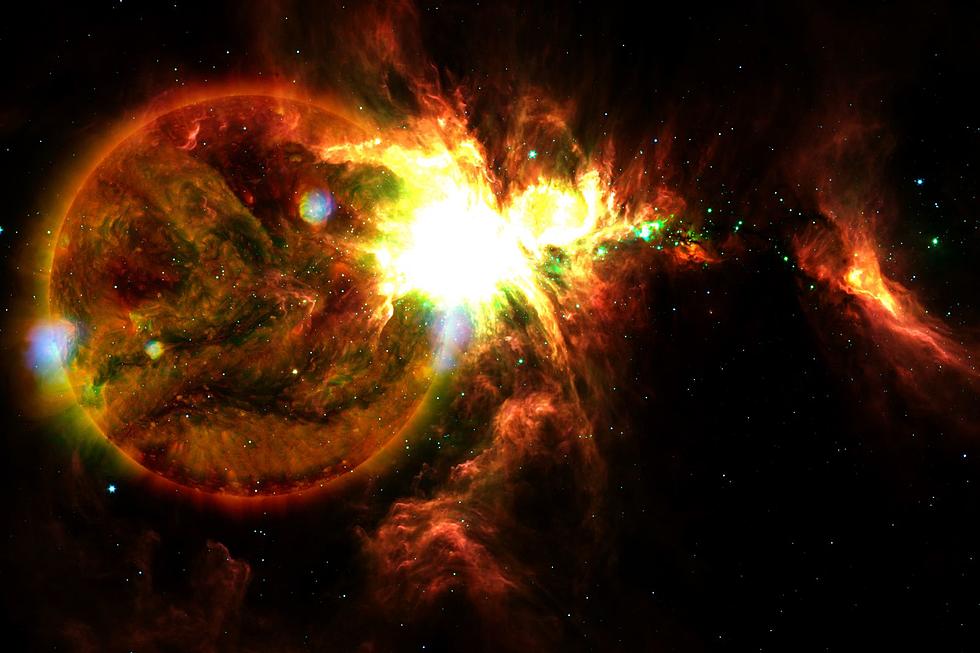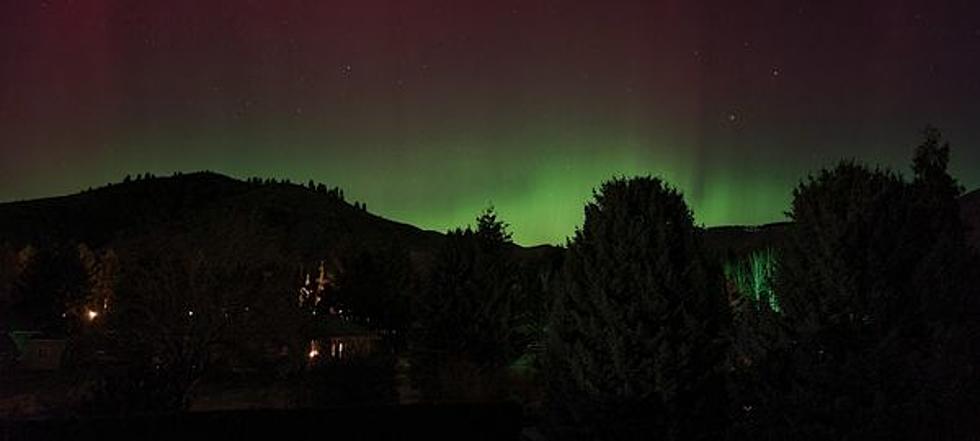
Despite Media Claims, There will be NO Aurora on Thursday
For some unknown reason, Legacy Media and smaller media have been reporting for days that we in the northwest (and several other states that don't normally experience such a thing) will be experiencing an aurora borealis this Thursday.
I first heard the story break on ABC, CBS, etc. on Friday morning, soon to be followed by secondary and tertiary outlets across the nation. Immediately, I sought the assistance of the internet and began scouring various websites dedicated to space weather (of which there are numerous). Curiously, I saw no indication.
The first place one should go when looking for a near future aurora would be what is called the enlil spiral, which can be found right here. The screen shot directly below was taken on the day of this report.
Any sort of incoming coronal mass ejection would be clearly shown in the image above if we were to be about to experience potential aurora. The image would look a lot like the screen shot below if we had any kind of incoming event...
The erroneous report seems to have originated out of the University of Alaska, Fairbanks. This, despite absolutely zero evidence to support the claim.
Now, it is true that times surrounding the equinox and solstice can have amplified instances of coronal mass ejections. However, that alone is no reason for such a claim. Having just passed the solstice, I suppose one could be anxious to see if the trend continues, but alas, there will be no sunshine in Mudville, if you will.
That being said, there exists a good chance those of us in the northwest (and other more southern latitudes) will have a good chance to see the aurora borealis sometime in the near future. The reason is two-fold:
One, despite most scientists believing that we would see what's called the solar maximum in 2024, or '25, we are in fact experiencing that phenomenon right now. In 2023 alone, we have already seen over 160 sunspots. Sunspots are the element primarily responsible for coronal mass ejections. This is especially true if the sunspots have well developed magnetic interplay within themselves. This essentially means that with more sunspots, there are better chances at seeing well developed instances, which in turn leads to better chances for a mass ejection.
Now, it is true that we have seen a couple x-class and m-class solar flares in the past few months, but all of them have been pointed away from Earth and with a lack of a corresponding coronal mass ejection. The image below is from the recent x-class flare in March of this year. It's the very bright spot on the bottom left. You'll notice the lack of material being ejected from the sun. Just a big, bright flash.
And two, the magnetic field is diminishing at an exponential rate. Since the invention of the magnetometer in the 1830s, the average intensity of the magnetic field at the Earth's surface has decreased by at least ten percent. However, considering the increasingly swift movement of true north and true south (seen below), and combining with that the fact that the most recent numbers calculated by scientists are several years behind current year, it seems clear that the field is waning.
...and the south pole...
Most curious to me is the fact that these reports have been published and broadcast over the last several days. A coronal mass ejection would have been here several times over during that 5 day span. The time it would take for an coronal mass ejection to contact Earth would be a couple days at most. More intense events can reach us a day, or less, after the event. Beyond that, major events like the Carrington Event hit Earth within hours.
Another chart worth consideration, albeit during an actual event, is what is called the kp index. This is a measurement of the solar winds, coronal mass ejections, and the effect of coronal holes on our magnetic field. In short, if the kp index is below a 6, we here in the northwest will not have anything interesting to observe other than normal skies overhead.
As you can see, the kp index is currently well into the green, or no noticeable space weather impact, and is expected to stay that way until we see another solar flare, coronal mass ejection, solar wind from a coronal hole (or some combination there of).
However, such a low kp index can present unique challenges in itself. Primarily the increase of cosmic rays entering our atmosphere (and therefore our bodies). An increase of cosmic rays have been shown through numerous scientific studies to have adverse affects on the cardio-vascular system, mental health and behavior, and several other facets to the daily human experience. That is a whole different problem all to its own which we will touch on another day.
The bottom line is that I cannot for the life of me make any sense behind the reporting we've been subjected to over the last several days. Is it lazy journalism? A desire for clicks? Outright lies for some crazy reason? Who knows. What is known is the fact that we are going to continue to see more and more aurora event further and further towards the equator as time marches on. Although not this week.
That is, until the magnetic field fails, the poles travel to a point to cause the Earth to tilt, as it has many times in the past and will many times in the future, and the night skies change for all.
Well, that and a lot of other really scary stuff that I won't touch on right now.
Speaking of which, it might be a good time to steward the land around you, teach your children and friends how to do such and don't forget love the life you have and the planet that holds you.
Beyond that, you can bet dollars to doughnuts that if a large event were to be coming toward us, I'd be writing about it feverishly.
Ya know... dollars to doughnuts isn't a great bet anymore; a poor barometer. Let's take a page from the World Economic Forum culinary guide and say crickets to quarters. There. That's a far better and more modern bet to make.
20 States With The Worst Roads In The Country
More From KW3







